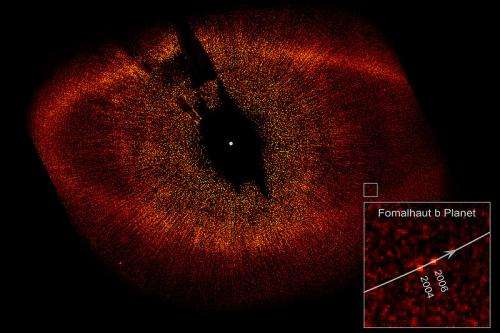The orbits of exoplanets

(PhysOrg.com) -- An exoplanet is a planet orbiting a star other than our sun.
As of this week, the exoplanet encyclopedia website lists 694 confirmed planets around other stars. Most of them have numerous physical parameters reasonably well determined, such as planetary mass and size of the orbit. One important parameter is the eccentricity of an orbit, a measure of how non-circular it is; a circular orbit has an eccentricity of zero, while the maximum eccentricity is one.
In our solar system, for example, the Earth's eccentricity is 0.017 (almost a perfect circle), and the largest planetary eccentricity is Mercury's, 0.206. Since the eccentricity in part determines how the solar heating of a planet varies over its year, it is a critical parameter for inferring whether possible liquid water on an exoplanet surface (non has yet been discovered) could stay liquid over its whole year.
In striking contrast to solar system planets, exoplanet studies of giant planets have found that most have large eccentricities, many greater than 0.3. The Kepler satellite has detected over a thousand exoplanets (or candidate exoplanets) so far using the transit technique (i.e., seeing the starlight dim as the planet passes across the face of the star). Obtaining the orbital parameters of transiting exoplanets, however, is not as easy as with other techniques. Nevertheless, models can analyze the statistical behavior of the transits and infer general characteristics.
CfA astronomers Matt Holman, Samuel Quinn, Darin Ragozzine, and Guillermo Torres joined with colleagues on the Kepler science team to estimate the eccentricities of exoplanets around stars slightly cooler than the sun. With some fairly general assumptions, they find an average eccentricity is probably somewhat larger than Mercury's in our solar system, and with extreme values on either end (close to zero or to one) unlikely. The new results, which will refined as more data are collected and analyzed, are important not only for their implications about habitable planets, but because they will help astronomers better how planets form and settle into their stable orbits.
Provided by Harvard-Smithsonian Center for Astrophysics


















